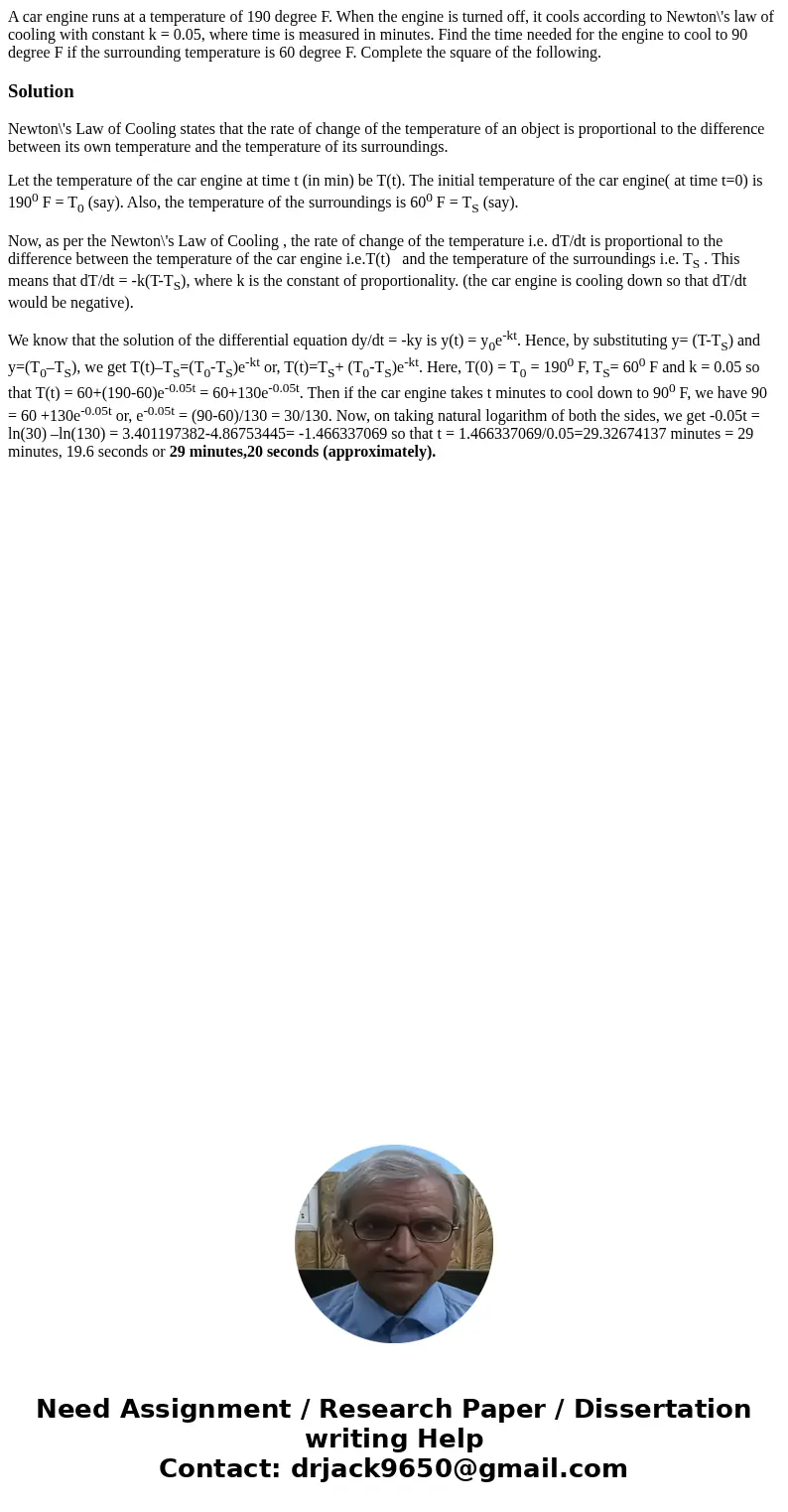A car engine runs at a temperature of 190 degree F When the
Solution
Newton\'s Law of Cooling states that the rate of change of the temperature of an object is proportional to the difference between its own temperature and the temperature of its surroundings.
Let the temperature of the car engine at time t (in min) be T(t). The initial temperature of the car engine( at time t=0) is 1900 F = T0 (say). Also, the temperature of the surroundings is 600 F = TS (say).
Now, as per the Newton\'s Law of Cooling , the rate of change of the temperature i.e. dT/dt is proportional to the difference between the temperature of the car engine i.e.T(t) and the temperature of the surroundings i.e. TS . This means that dT/dt = -k(T-TS), where k is the constant of proportionality. (the car engine is cooling down so that dT/dt would be negative).
We know that the solution of the differential equation dy/dt = -ky is y(t) = y0e-kt. Hence, by substituting y= (T-TS) and y=(T0–TS), we get T(t)–TS=(T0-TS)e-kt or, T(t)=TS+ (T0-TS)e-kt. Here, T(0) = T0 = 1900 F, TS= 600 F and k = 0.05 so that T(t) = 60+(190-60)e-0.05t = 60+130e-0.05t. Then if the car engine takes t minutes to cool down to 900 F, we have 90 = 60 +130e-0.05t or, e-0.05t = (90-60)/130 = 30/130. Now, on taking natural logarithm of both the sides, we get -0.05t = ln(30) –ln(130) = 3.401197382-4.86753445= -1.466337069 so that t = 1.466337069/0.05=29.32674137 minutes = 29 minutes, 19.6 seconds or 29 minutes,20 seconds (approximately).

 Homework Sourse
Homework Sourse